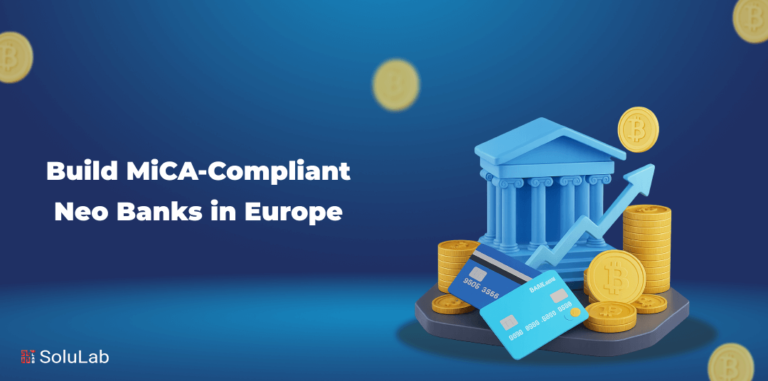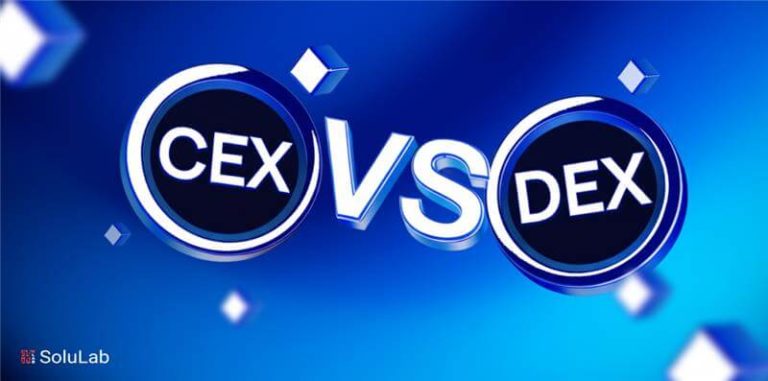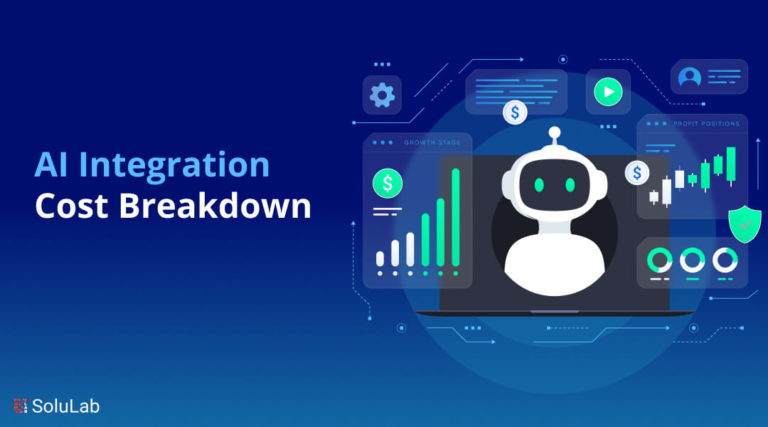Much has been made of the impending arrival of quantum computing. It promises to do calculations at orders of magnitude faster than existing computers. But what does quantum computing imply for blockchain’s future? Do quantum computers pose a risk to blockchain security?
To address this issue, it’s necessary to first examine the history of quantum computing. From this vantage point, it is feasible to examine how the technology will affect blockchain initiatives.
Quantum computing that is useful may still be five to ten years away.
While considerable development has been made in the field of quantum computing, experts think it will be another five to 10 years before the technology can provide substantial benefit. Still, that day is becoming nearer and nearer. While the quantum computing business was valued at about $507.1 million in 2019, it is expected to rise to $65 billion by 2030.
The Quantum Internet and Data Security in the Future
Quantum computing has the potential to completely transform the Internet, giving birth to the so-called “Quantum Internet,” which will enable devices to communicate information using quantum mechanics principles. The Quantum Internet may potentially serve as a platform for online communication and computational operations that traditional computing techniques cannot support.
The Quantum Internet promises to provide far better levels of digital security than was previously achievable. Quantum key distribution OR QKD is a good illustration of this potential since it can significantly enhance encrypted communication. Quantum key distribution methods, like conventional encrypted communications and data transmission, would distribute cryptographic keys between two or more organizations, allowing them to secretly communicate information. Quantum key distribution, on the other hand, can fully conceal the exchange of encryption keys; it may even alert users of the presence of an observer.
Furthermore, quantum computers may enable genuinely random number creation. The production of random numbers is required for safe encryption, however, most conventional computers depend on “pseudo-random” number generators. Because the numbers produced by these algorithms are not random, they are still vulnerable to manipulation.
Quantum computing will also affect, and perhaps enhance, the financial services, tools, and infrastructures on which society depends. Furthermore, since quantum computers are especially well-suited to sifting through massive amounts of random data, they have the potential to significantly enhance automated risk assessment and prediction models.
In theory, quantum computers have an unrivaled ability to detect patterns, classify data, and make predictions that are not currently feasible. A bank, for example, might employ quantum computing to enhance algorithms and models that compute statistical probabilities, predicting the probability of unusual behavior that could impact financial markets. Quantum computers’ data-sorting skills may also have significant consequences for optimizing trade data, potentially increasing investment returns, and opening the door to new investment possibilities.
What exactly is quantum computing?
Quantum computing is the study of creating computer technology based on quantum-theoretical concepts. Following the principles of quantum physics, the quantum computer would acquire tremendous processing capacity by being able to be in many states and execute tasks utilizing all potential permutations at the same time.
Blockchain’s Future with Quantum Computing?
Bitcoin and other cryptocurrencies will fail unless quantum technologies are integrated, according to Aleksey K. Fedorov, Evgeniy O. Kiktenko, and Alexander I. Lvovsky.
Around 10 percent of GDP (globally) is expected to be held on blockchains by 20251. Blockchain is a type of digital technology that protects information against unwanted modifications by using encryption methods. It is the foundation of the king of cryptocurrency, which is Bitcoin. In a sector worth more than $150 billion, blockchain-related goods are utilized everywhere from banking, manufacturing, and healthcare.
When it comes to information, data security, openness, and maintaining accountability become critical aspects. Blockchain is a secure digital record often known as a ledger. It is managed collaboratively by users all around the world instead of a single central administration. Certain decisions like adding an entry or block to the ledger are made by consensus, thus personal trust is not a factor. Any individual inside or outside the network may verify the ledger’s integrity by completing a simple computation.
However, cracking a blockchain’s encryption protocols will be within the capability of quantum computers within a decade.
Codes that only work in one direction
!
Blockchain security is based on mathematical functions that are only one way. These are simple to execute on a standard computer but complex to reverse-engineer. Multiplying two big prime numbers, for example, is simple. However, it is difficult to determine the primary characteristics of a particular product. It may take a normal computer a much longer time to solve.
These functions are used to generate digital signatures, which blockchain users may use to confirm their identity to others. These are easy to verify but very difficult to forge. One-way functions are also used in the blockchain ledger to validate transaction history. The hash, which is a short sequence of bits, is produced by combining the current ledger and the new block; this updates whenever the contents of the entry change. Again, obtaining the hash of a block (to process information to add a record) is relatively easy, but choosing a block that will yield a specific hash result to add a block to the ledger is difficult. To get the information that generated the hash, the process would have to be reversed.
In addition, Bitcoin demands that the hash satisfy a mathematical requirement. To add a block to the ledger, the user must maintain their computer performing a random search until that requirement is met. This procedure delays the adding of blocks, allowing everyone in the network to record and verify everything. It also prevents anyone from monopolizing network management since anybody with enough computing power may contribute blocks.
However, quantum computers will be able to calculate the one-way functions, such as blockchains, that are used to protect the Internet and financial transactions within the next 10 years. One-way encryption, which is now widely used, will quickly become outdated.
Such catastrophic extinctions in information security have occurred in the past. At the time of WWII, for instance, Enigma devices encrypted and decoded German military communications, giving the Axis forces an advantage until the Allies cracked the Enigma code. The Data Encryption Standard, a then-state-of-the-art technique for encrypting computer data, was broken in a public contest in 1997 to show its insecurity. This prompted a second competition to develop a new protocol, which resulted in the Advanced Encryption Standard that exists today.
Advantages of Quantum Computing
Quantum computers accomplish computing tasks by using physical phenomena such as superpositions of states and entanglement. They are presently considerably less powerful than traditional computers, but they will soon be able to surpass them in certain tasks. As mathematician Peter Shor pointed out in 19943, one such example is breaching security protocols based on cryptographic algorithms. A blockchain is especially vulnerable to this since its only line of defense is one-way functionality – a user’s only safety is their digital signature, while bank customers are safeguarded by plastic cards, security questions, identification checks, and human cashiers.
The greatest immediate danger is therefore the cracking of digital signatures. A criminal with access to a quantum computer might use Shor’s technique to counterfeit any digital signature, impersonate that user, and steal their digital assets. Most experts believe that this accomplishment would need the development of a universal quantum computer (capable of executing a broad range of computations), which is still more than a decade away. However, other experts believe that this may happen sooner if upcoming quantum computational devices with more restricted capabilities, such as those being developed by D-Wave, Google, and others.
Quantum computers will discover answers fast, possibly allowing a few users to filter transactions and dominate the adding of blocks to the Bitcoin ledger (known as mining). These people may disrupt transactions, prevent their own from being recorded, or spend twice. An international research team has emphasized the potential consequences of such attacks6, with a paper earlier this year outlining the risks and proposing a possible workaround7.
If no solution is found to update the protocols once quantum computers become available, cryptocurrency will crash.
Moreover, quantum technology has the potential to enhance blockchains’ security and performance
Quantum-safe encryption.
Quantum communications are intrinsically secure since no user may mimic another. These technologies encode and transmit bits by using the states of individual particles of light (photons). According to fundamental physics, quantum states cannot be duplicated or measured without being changed. Any eavesdropper will be discovered instantly.
Quantum cryptography may be used to replace traditional digital signatures and encrypt all peer-to-peer interactions inside a blockchain network. Our group presented a very basic system8. The complexity and expense of quantum cryptography networks, on the other hand, will restrict their use. Because there is no confidence in any intermediate node and therefore all communications must be direct, existing protocols demand that each node in the network be linked to every other through optical fiber channels. Protocols will be required to ensure secure connections even when information travels via untrustworthy nodes; these systems have been created but must be made more widely available to users.
Another issue is photon loss in optical fibers. The range of current quantum-key distribution systems is therefore limited to a few tens of kilometers. The answer is to create a quantum repeater that distributes entangled states across communication parties via quantum teleportation and quantum optical memory. The research is advancing, but it is still a long way from producing a functional gadget.
One-way functions should be strengthened in the meanwhile. Alternative encryption functions have been proposed, which should be similarly difficult to decrypt using conventional or quantum computers. Although not entirely secure, they could be run on current hardware to purchase time, but they might also be decoded in the long run.
The internet of quantum particles. The use of quantum technology for communication and the computational processing of blockchain data would improve security while also making blockchains faster and more efficient. Such a phase necessitates the creation of a ‘quantum internet, which connects quantum computers through – a quantum communications network. Fully quantum blockchains would thereafter be feasible to operate. These would be more efficient and safe since they would save certain computationally expensive stages in the present verification as well as consensus procedures. The suggested Quantum Bitcoin money may be implemented, with the security guaranteed by quantum mechanics’ no-cloning theorem. If quantum ‘banknotes’ like these are still required in the future, they might be rendered difficult to fake by incorporating quantum information records.
Because there is still a long way to go to witness the age of the quantum internet, ‘blind quantum computing’ is a stopgap measure. In this case, any user having a standard computer may execute an algorithm if a distant quantum computer is available, without revealing the input data or method. This technique would allow public cloud-quantum-computing platforms, lowering the cost and increasing the accessibility of blockchains
Quick Read: Fundamentals of High Performance Blockchain ICO
Conclusion
The blockchain industry must upgrade its current software to utilize cryptographic one-way functions. These are difficult to reverse, which is more often the case when we are using conventional or quantum computers. Platforms should adapt and be capable of making changes in the cryptographic algorithms on the fly until these post-quantum solutions are developed or standardized.
A unique and innovative blockchain project needs expert handling, SoluLab is one of the top 3 blockchain developers in the world. Reach out to us today for your project’s free consultation.




